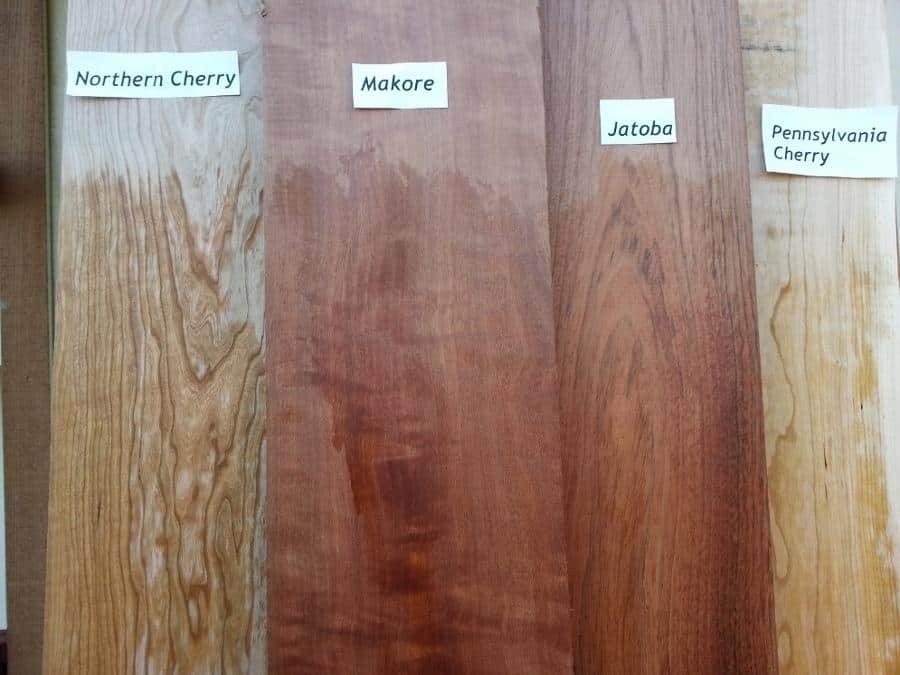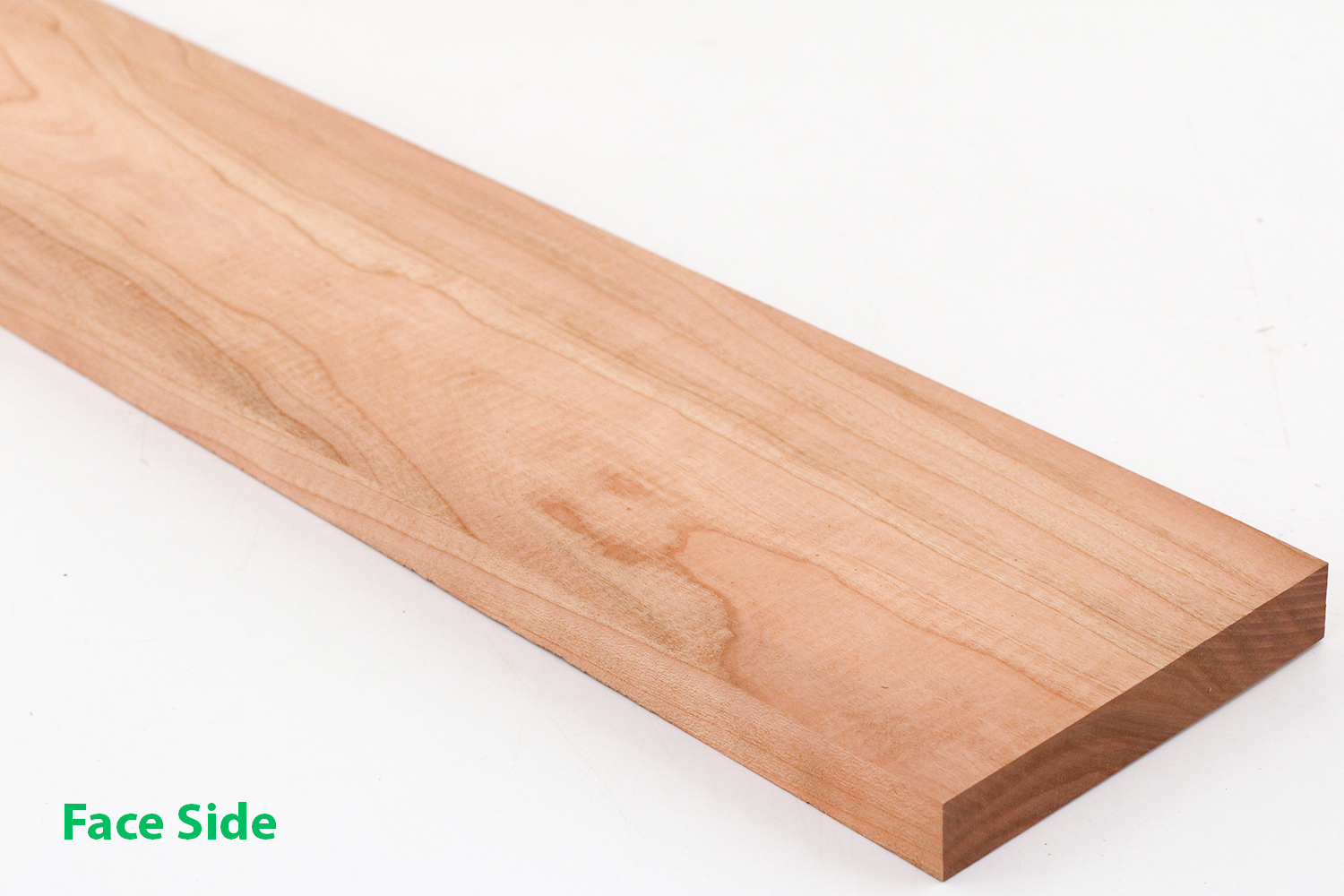Looking to add some cherry wood to your next woodworking project but wondering about the cost? We’ve got you covered! In this article, we’ll answer the question, “how much does cherry wood cost per foot?” By the end, you’ll have a good idea of what to expect when budgeting for this beautiful and versatile wood.
Cherry wood, known for its rich colors and attractive grain patterns, is a favorite among furniture makers and DIY enthusiasts alike. But how much should you expect to pay for it? In this guide, we’ll break down the cost of cherry wood per foot, enabling you to make informed decisions for your woodworking projects.
Whether you’re a beginner or an experienced woodworker, it’s important to consider the cost of materials. So, let’s dive in and explore the world of cherry wood pricing per foot! Read on to discover how much cherry wood may cost and how it can affect your project’s budget.

How Much Does Cherry Wood Cost Per Foot? Exploring the Price of this Exquisite Hardwood
Cherry wood is known for its beautiful grain patterns and rich reddish-brown color, making it a popular choice for high-end furniture, cabinetry, and flooring. If you’re considering working with cherry wood for your next project, one of the essential factors you’ll need to consider is the cost. In this article, we will delve into the various aspects that determine the price of cherry wood per foot, providing you with the information you need to make an informed decision.
1. Factors Affecting Cherry Wood Pricing
The cost of cherry wood per foot can vary significantly depending on several factors. First and foremost, the grade of the wood plays a crucial role in determining its price. Higher-grade cherry wood, which has fewer knots and imperfections, will typically cost more than lower-grade options. Additionally, the thickness of the wood can impact the price, as thicker boards require more raw material and labor to produce.
Another essential factor to consider is the sourcing and availability of cherry wood. Challenging environmental conditions or restricted harvesting areas can affect the supply, driving up the cost. Additionally, transportation costs and regional demand can impact the final price you pay for cherry wood per foot.
2. Average Cost Range for Cherry Wood
While cherry wood prices can vary depending on the factors mentioned above, it is helpful to have a general understanding of the average cost range you can expect. On average, cherry wood can cost anywhere between $5 to $15 per board foot. Board footage is calculated based on the thickness, width, and length of the wood. Thicker and wider boards will naturally cost more due to the increased volume of wood. It’s also worth noting that prices may fluctuate depending on your geographical location and the specific supplier you choose.
3. Comparing Cherry Wood to Other Hardwoods
When considering the cost of cherry wood, it can be helpful to compare it to other hardwood options. While cherry wood falls into the mid-range in terms of price, it offers excellent value for its inherent beauty and durability. Hardwoods such as Mahogany and Walnut, known for their premium qualities, can cost significantly more than cherry wood. On the other hand, more common hardwoods like Oak or Maple may be less expensive than cherry wood, but they may not have the same level of aesthetic appeal.
It’s important to weigh the cost against the specific requirements and desired outcome of your project. Ultimately, opting for cherry wood can elevate the overall look and value of your finished piece, making it worth the investment.
4. Tips for Saving on Cherry Wood Costs
If you’re working within a budget but still want to incorporate cherry wood into your project, here are a few tips to help you save on costs:
1. Consider using cherry wood veneer instead of solid cherry wood: Cherry wood veneer is a thin layer of cherry wood applied to a more cost-effective substrate. It provides the same visual appeal of solid cherry wood but at a lower cost.
2. Look for local sources: Purchasing cherry wood from local suppliers can help reduce transportation costs and potentially offer better pricing.
3. Consider the use of narrower boards: Instead of going for wider boards which are generally more expensive, opt for narrower boards that still showcase the beauty of cherry wood.
4. Purchase in bulk: If you have multiple projects or foresee future use of cherry wood, buying in larger quantities can sometimes lead to volume discounts.
Overall, by being strategic and exploring different options, you can find ways to work with cherry wood while staying within your budget.
Additional Considerations for Working with Cherry Wood
1. Maintenance and Care
When investing in cherry wood, it’s important to consider the long-term maintenance and care needed to keep it in pristine condition. Cherry wood requires regular cleaning and dusting to avoid the buildup of dirt and grime. It’s also sensitive to UV rays and may darken over time when exposed to direct sunlight. To protect cherry wood furniture or flooring from UV damage, consider using blinds or curtains to limit exposure.
2. Eco-Friendly Options
For those concerned about the environmental impact of using cherry wood, it’s worth exploring options for sustainably sourced lumber. Look for certifications such as the Forest Stewardship Council (FSC), which ensures the wood is harvested responsibly and in ways that maintain the health of the forest ecosystems.
3. Working with a Professional
If you’re unsure about how much cherry wood you’ll need for your project or how to work with it effectively, consider consulting with a professional carpenter or interior designer. They can offer guidance on the right amount of wood to purchase, the best wood grade for your needs, and provide valuable advice on how to maximize the beauty of cherry wood in your space.
In conclusion, understanding the factors that influence the cost of cherry wood per foot and exploring strategies to save on costs can help you make an informed decision for your woodworking or design project. By considering the unique characteristics of cherry wood and its potential long-term benefits, you can create stunning and timeless pieces that will stand the test of time.
Key Takeaways: How Much Does Cherry Wood Cost per Foot?
- Cherry wood is a popular choice for furniture and woodworking projects.
- The price of cherry wood can vary depending on factors like grade, thickness, and availability.
- On average, cherry wood can cost around $6 to $10 per foot.
- High-quality cherry wood with desirable grain patterns and uniform color may be more expensive.
- It’s important to compare prices from different suppliers before making a purchase.
Frequently Asked Questions
Looking to understand the cost of cherry wood by the foot? We’ve got you covered! Check out these commonly asked questions to learn more about the pricing of cherry wood per foot.
1. What factors influence the cost of cherry wood per foot?
Several factors can contribute to the cost of cherry wood per foot. One of the main factors is the quality of the wood itself. Higher-quality cherry wood, which is more consistent in color and grain pattern, tends to be pricier. Additionally, the thickness and width of the wood can affect the price per foot. Thicker and wider boards typically command a higher cost. Finally, market demand and availability can influence the price of cherry wood per foot. If cherry wood is in high demand or scarce, it may drive up the cost.
When considering the cost of cherry wood per foot, it’s essential to take these factors into account and choose the option that best suits your needs and budget.
2. Is cherry wood more expensive than other types of wood?
Cherry wood is generally considered a mid-range hardwood in terms of cost. While it may be slightly pricier compared to some softwoods, it is generally more affordable than premium hardwoods like mahogany or walnut. When compared to other popular hardwoods such as oak or maple, cherry wood falls within a similar price range. However, it is worth noting that the cost can vary depending on factors such as location, availability, and current market conditions.
Ultimately, cherry wood offers a beautiful and durable option that is often considered a good value for its price.
3. Are there different grades of cherry wood that affect the cost per foot?
Yes, the grade of cherry wood can impact the cost per foot. Cherry wood is commonly graded into three categories: Select, FAS (First and Seconds), and Common. Select grade is the highest quality and has fewer imperfections, making it more expensive. FAS grade also offers high-quality wood but may have slightly more imperfections than Select. Common grade, on the other hand, may have more knots, color variations, and other natural characteristics, making it more affordable.
When purchasing cherry wood, it’s important to consider the grade and factor it into the overall cost per foot based on your preferences and project requirements.
4. Is the cost of cherry wood per foot consistent across all suppliers?
No, the cost of cherry wood per foot can vary between suppliers. Different suppliers may offer varying pricing based on factors such as their location, sourcing methods, and overhead costs. It’s always advisable to compare prices from different suppliers to ensure you are getting the best value for your money without compromising on quality. Additionally, keep in mind that prices can fluctuate over time due to market conditions and availability.
By doing your research and obtaining quotes from multiple suppliers, you can make an informed decision and find the most competitive price for cherry wood per foot.
5. Can I expect the cost of cherry wood per foot to change over time?
Yes, the cost of cherry wood per foot can change over time. Like any other commodity, the price of cherry wood can be influenced by various factors, including supply and demand, economic conditions, and market trends. For example, if there is a shortage of cherry wood due to limited availability, the price may increase. On the other hand, if there is an abundance of cherry wood in the market, prices may become more competitive.
It’s essential to stay updated on industry trends and consult with suppliers or professionals to understand any potential fluctuations in the cost of cherry wood over time.

Summary
Cherry wood can be quite expensive, costing around $3 to $18 per board foot. The price depends on various factors like the quality and thickness of the wood. Additionally, the type of cherry wood, such as Black Cherry or Brazilian Cherry, can affect the cost. It’s also essential to consider additional expenses, like shipping and delivery fees. Overall, if you’re planning to purchase cherry wood, it’s essential to research and compare prices from different sources to find the best deal.
In conclusion, cherry wood prices can vary significantly, so it’s important to do your homework and shop around for the best price. Remember to consider factors like wood quality, type, and additional costs when determining the total cost of cherry wood per foot. Happy shopping!
